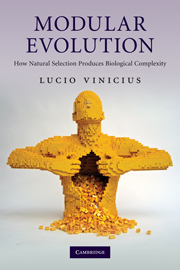Book contents
- Frontmatter
- Contents
- Preface
- 1 From natural selection to the history of nature
- 2 From the units of inheritance to the origin of species
- 3 Multicellularity and the developmental code
- 4 Life cycle evolution: life and death of the soma
- 5 Sex and its consequences: the transition that never happened
- 6 Animal societies: the case of incomplete evolutionary transitions
- 7 The new ‘Chain of Being’: hierarchical evolution and biological complexity
- References
- Index
1 - From natural selection to the history of nature
Published online by Cambridge University Press: 05 June 2012
- Frontmatter
- Contents
- Preface
- 1 From natural selection to the history of nature
- 2 From the units of inheritance to the origin of species
- 3 Multicellularity and the developmental code
- 4 Life cycle evolution: life and death of the soma
- 5 Sex and its consequences: the transition that never happened
- 6 Animal societies: the case of incomplete evolutionary transitions
- 7 The new ‘Chain of Being’: hierarchical evolution and biological complexity
- References
- Index
Summary
For their key role in the revival of heliocentrism, we may certainly excuse Copernicus, Kepler and Galileo for being less successful at explaining why planets move. It was only 150 years after Copernicus anonymously circulated his pamphlet Commentariolus in 1510 that Isaac Newton's Principia Mathematica offered a theory of planetary motion and established the first modern paradigm for celestial mechanics. Darwin's theory of evolution represented a scientific revolution of the same importance and magnitude, but its historical development bears a crucial difference from heliocentrism. Despite a number of forerunners in Britain and France and the work of his contemporary Alfred Wallace, most of us associate both the substantiation of biological evolution as a fact, and the theory of natural selection as evolution's first and only theoretical paradigm, with Charles Darwin and the Origin of Species (1859). First, Darwin made species intelligible by setting them in motion as Copernicus had done with the planets. Biological evolution, or the movement of species in time, implied that the ultimate cause of species features is their history. And second, Darwinism found its fundamental law of motion in the principle of natural selection, the consequence of variation and competition within populations. For his contributions to the facts and theory of evolution, Darwin can be seen both as the Copernicus and the Newton of biology (Padian, 2001).
Although the triumph of Darwinism is denied by few, scientific revolutions also demonstrate that even the most successful and influential theories may be wrong or incomplete.
- Type
- Chapter
- Information
- Modular EvolutionHow Natural Selection Produces Biological Complexity, pp. 1 - 37Publisher: Cambridge University PressPrint publication year: 2010

